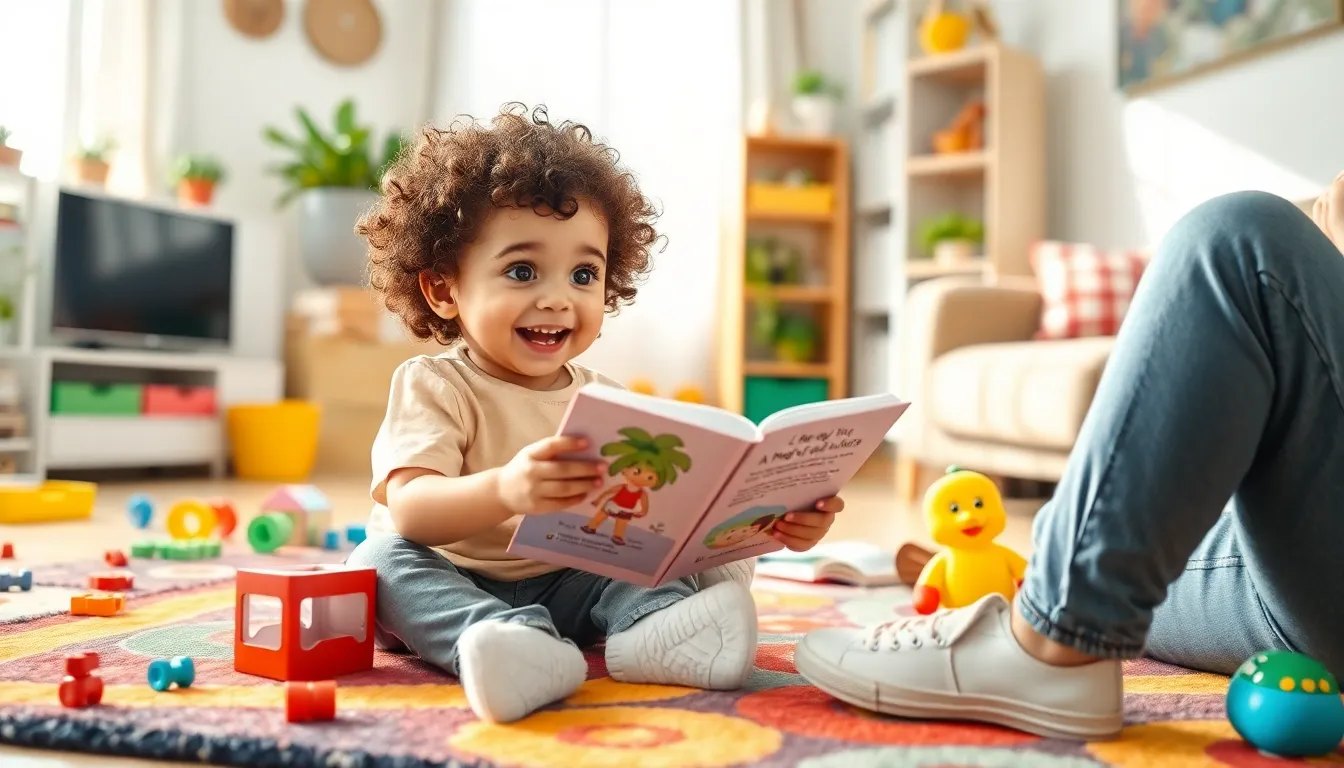Table of Contents
ToggleEvery parent knows that kids can be little chatterboxes, but understanding their language can sometimes feel like deciphering ancient hieroglyphics. From the first babbles to full-blown conversations, the journey of language communication in children is both fascinating and hilarious. It’s a wild ride filled with mispronunciations, imaginative word creations, and the occasional accidental slip that leaves everyone in stitches.
Importance Of Language Communication In Kids
Language communication plays a crucial role in children’s overall development. Effective communication skills contribute to various aspects of their growth.
Cognitive Development
Cognitive growth relies significantly on language skills. Language fosters critical thinking by helping children express thoughts and ideas. Through conversations and storytelling, they develop comprehension and analytical abilities. Engaging in dialogue promotes problem-solving as kids learn to articulate solutions. Vocabulary expansion enhances their understanding of concepts, creating connections between words and meanings. Research indicates that children exposed to rich language experiences often perform better academically.
Social Skills Development
Social skills depend heavily on effective communication. Kids learn to interact with peers through dialogue, sharing experiences and emotions. Cooperative play often arises from conversations, encouraging teamwork and collaboration. Expressing feelings verbally fosters empathy, allowing children to understand others’ perspectives. Additionally, using language helps navigate social norms and resolve conflicts. Studies show that children with strong communication skills tend to develop healthier relationships throughout life.
Strategies For Improving Language Communication


Effective strategies boost language communication skills in kids. These methods foster engagement and creativity, making learning enjoyable.
Engaging Activities
Incorporate games that promote vocabulary and sentence structure usage. Activities like scavenger hunts encourage kids to describe objects they find. Arts and crafts sessions allow children to verbalize their thoughts while creating. Singing songs and rhyming reinforces phonemic awareness and pronunciation. Reading picture books invites interaction, prompting kids to discuss illustrations and predict storylines. Each activity provides an opportunity for toddlers and older children to practice expressing ideas. Emphasizing play keeps the learning process fun and dynamic.
Interactive Storytelling
Storytelling stimulates imagination and encourages language exploration. Involve children in storytelling by asking open-ended questions about plot and characters. Utilize puppets or props to illustrate stories, enhancing visual engagement. Encourage them to retell familiar tales, allowing for personal twists and creativity. Incorporate storytelling sessions with peers to develop conversational skills and boost confidence. By varying themes and genres, children gain exposure to diverse vocabulary and narrative structures. Regular practice equips kids with experience, enhancing their communication skills.
Technology And Language Communication
Technology plays a significant role in enhancing children’s language communication skills. Various tools offer engaging ways for kids to learn and practice language.
Educational Apps
Educational apps such as Duolingo Kids and Endless Alphabet provide interactive experiences. They use games and fun quizzes to reinforce vocabulary and grammar. App features like speech recognition help children improve pronunciation. Progress tracking encourages continued practice. Parents can monitor development by reviewing achieved milestones.
Online Resources
Online resources, including websites and video platforms, offer valuable content for language learning. Sites like ABCmouse and Starfall deliver structured lessons that adapt to children’s needs. Video platforms, such as YouTube, host channels dedicated to phonics and storytelling. Children can engage with lessons anytime, promoting consistency in learning. Many resources also include printable materials that enhance hands-on practice.
Common Challenges In Language Communication
Children often encounter various challenges in language communication during their developmental journey.
Speech Delays
Speech delays occur when a child’s speech development lags behind typical milestones. Many children experience these delays, which can manifest as late talking or difficulty forming words. Identifying these delays early can enable local speech therapy options. According to the American Speech-Language-Hearing Association, approximately 10% of children experience significant speech delays. Engaging in consistent conversation, singing songs, and reading aloud can help accelerate progress. Providing a rich language environment supports communication skills by encouraging the child to express themselves.
Language Disorders
Language disorders affect a child’s ability to understand and express language effectively. These disorders can manifest as difficulty with vocabulary, sentence structure, or comprehension skills. Some children may struggle with specific language impairment, which impacts their ability to produce and understand language consistently. Estimates suggest that 7% of school-aged children face language disorders. Interventions may include tailored speech therapy and interactive language games. Parents and caregivers can support children by modeling correct language use and promoting conversations to enhance communication abilities.
Language communication is a vital aspect of children’s development that shapes their cognitive and social skills. By understanding the nuances of their evolving communication styles parents and caregivers can better support their growth. Engaging in playful activities and utilizing technology can make learning language enjoyable and effective.
Addressing challenges like speech delays and language disorders with early intervention and supportive strategies ensures children thrive. As they navigate their unique language journeys they not only enhance their ability to express themselves but also build stronger relationships with those around them. Investing time and effort into fostering these skills pays off in countless ways throughout their lives.




